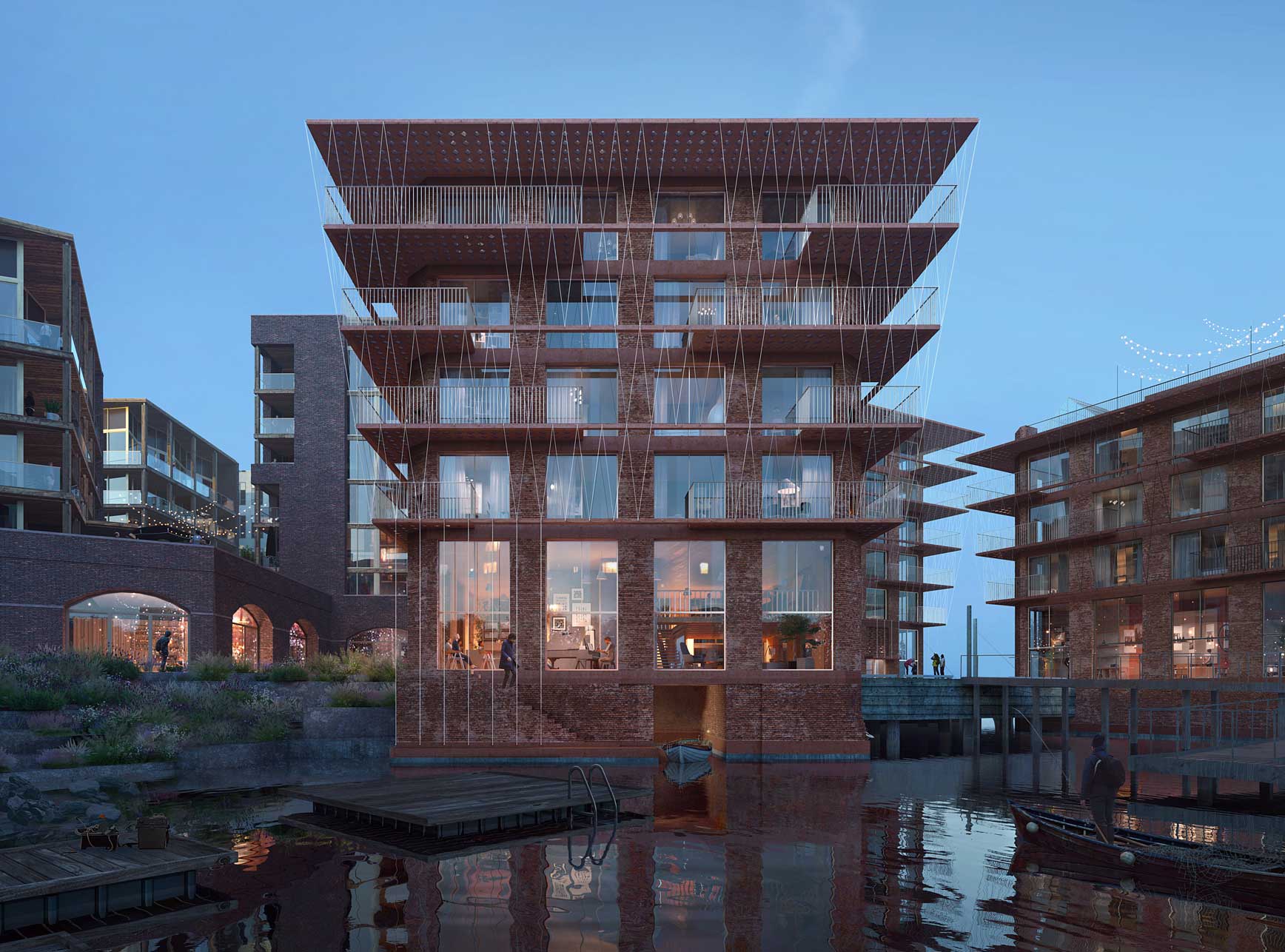
Grønlikaia
A proposal for the centre of Grønlikaia, Oslo’s last remaining large waterfront urban development opportunity, prioritising the health of the fjord alongside that of a new community, and with principles of circularity at its heart. In collaboration with Haptic, Morris+Company, Mae, Gort Scott, Useful Projects, Periscope and Tin Phan.
The Brief
Publicly owned developer, Hav Eiendom AS, and the Port of Oslo KF, issued an invitation to compete for a parallel commission to progress the design of the five areas that would make up the new mixed-use urban development of the quays in Grønlikaia – the last area of Oslo’s waterfront available for development and one with which the city sought to assess and deploy many lessons learned from previous large urban development projects and embrace opportunities for progressive approaches to ecological and social sustainability. The city had committed to developing to Futurebuilt criteria and had, with an eye to Kate Raworth’s theory of donut economics, a clear ambition to embed principles of circularity within the evolving plans for the district.
Combined, the five areas of Grønlikaia will provide space for 1500 residents and 1500 jobs on ‘land’ partly claimed from the fjord, together with underground structures for parking, and measures to mitigate the impact of the adjacent railway and highway. The visual connection between the city and the elevated Ekebergparken, inspiration for the view depicted in Edvard Munch’s The Scream, were also an important consideration.
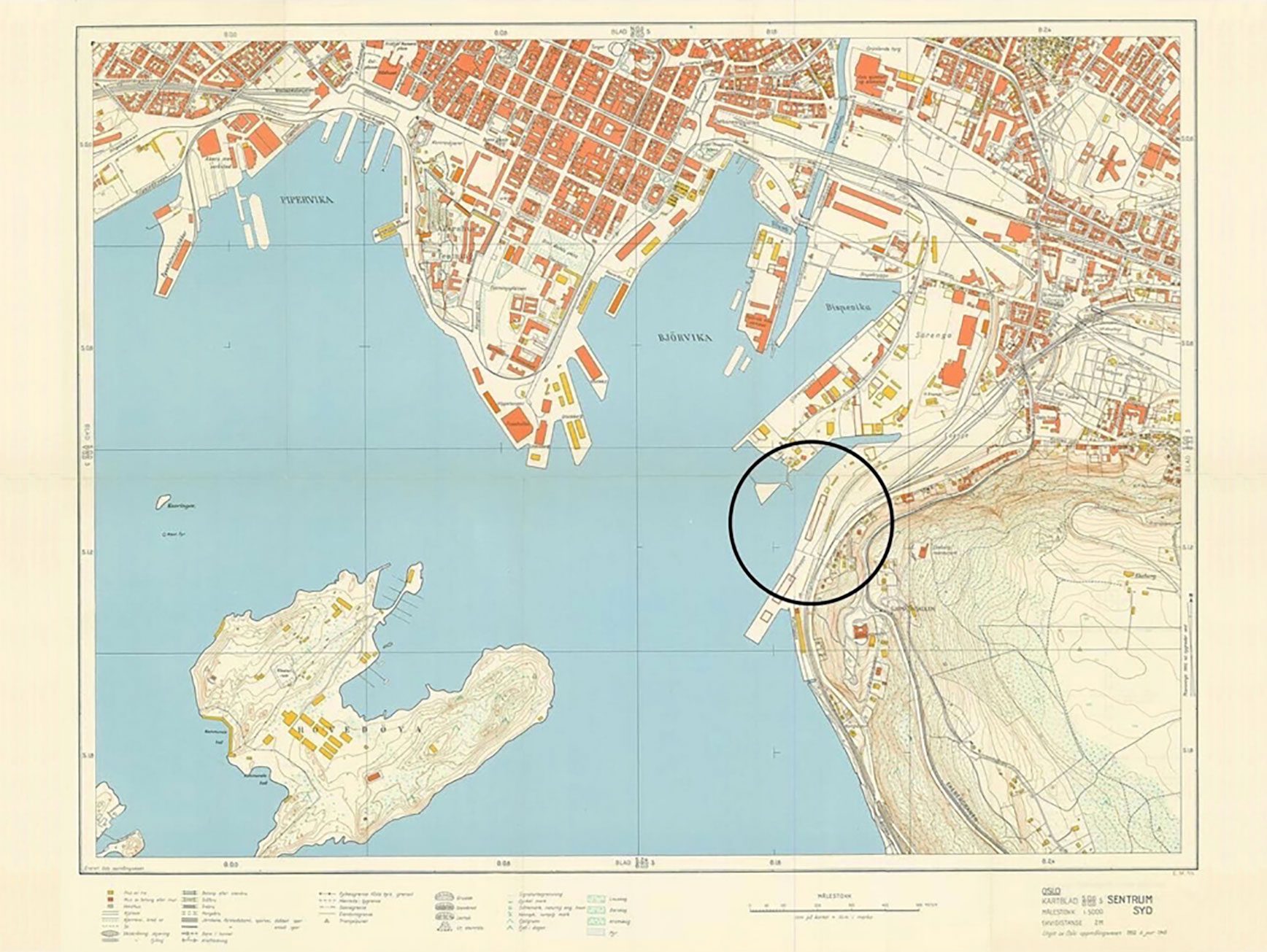
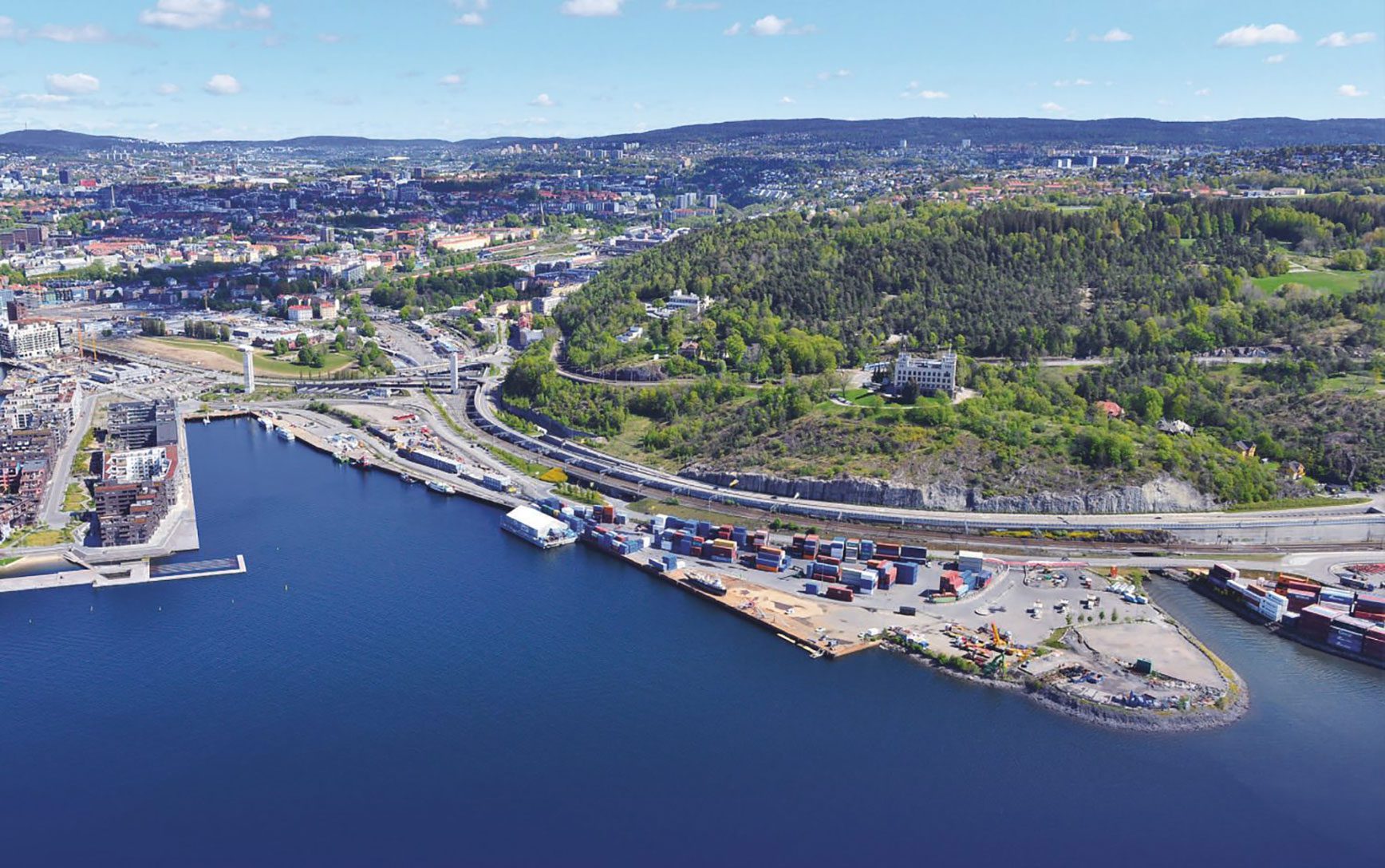
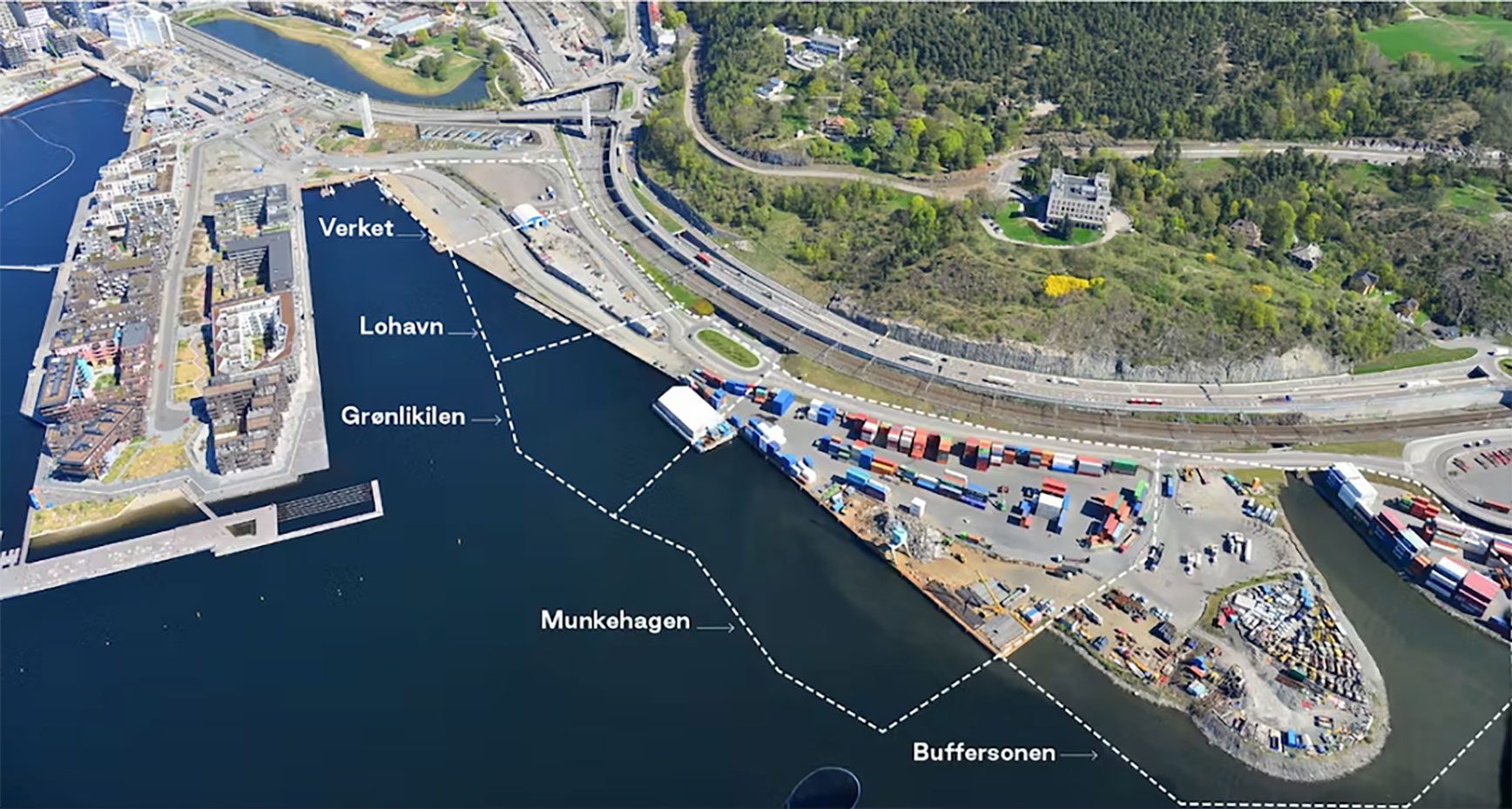
Our Response
Grønlikilen
Together with a large team of collaborators, led by Haptic, we were appointed to work on the central parcel of Grønlikilen, the commercial and social centre of the development, and the area proposed to accommodate a new ferry terminal and public transport connections.
The brief called for the Grønlikilen to be a distinct place of respite for those traversing the water’s edge, for the fjord to be allowed in to the neighbourhood and for congregation and social activity to define its character. Access to the water, places for recreation, social interaction, small scale commerce and exchange would characterise the public spaces, while apartment buildings of up to 10 storeys, providing 65% residential use, would be arranged with more porosity than the areas of the development focussed solely on residential use.
The brief also contained a clear ambition for a bold and recognisable waterfront landscape, and suggested a ‘floating island’ might provide a ‘softer transition’ from land to water than in the surrounding areas.
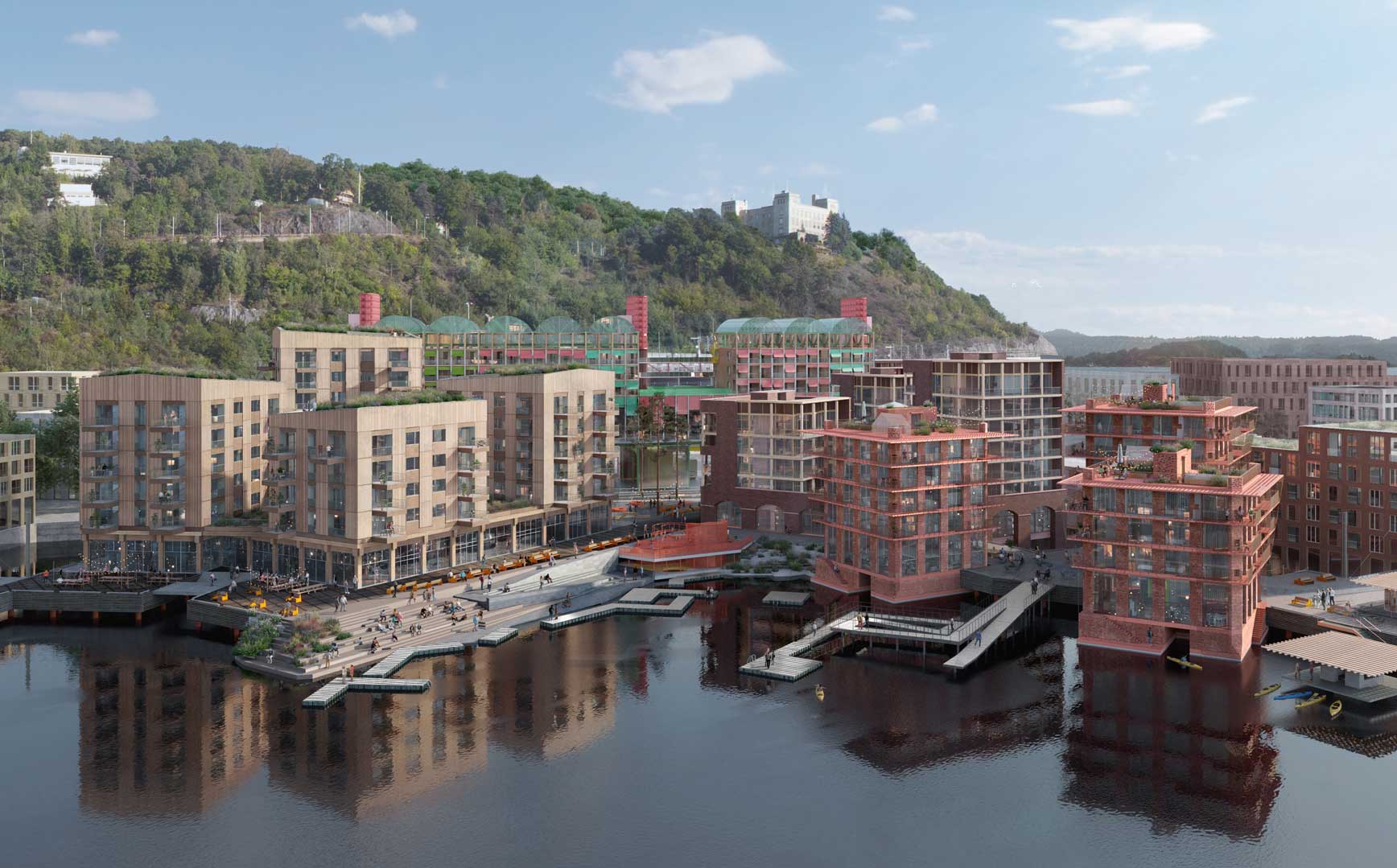

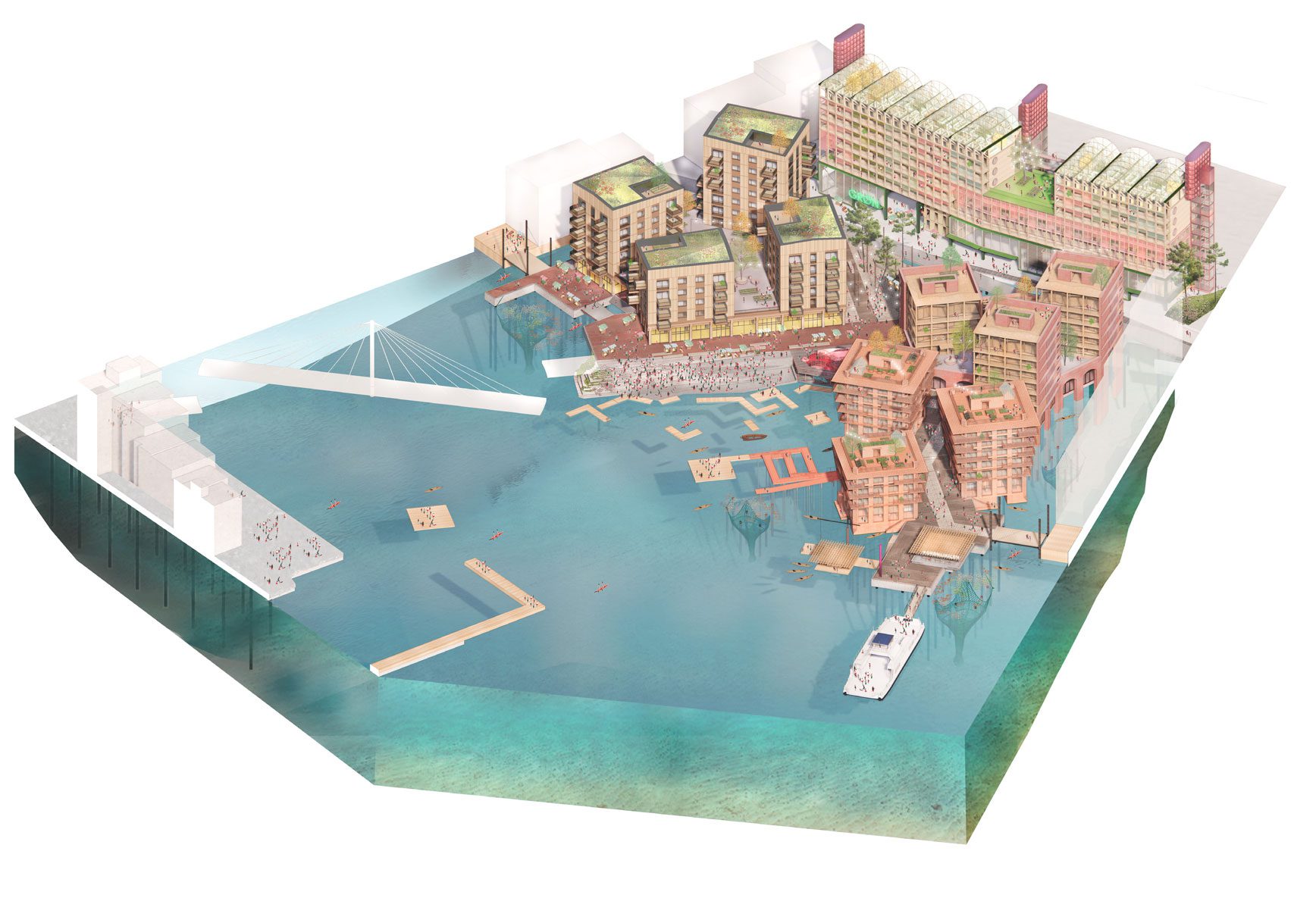
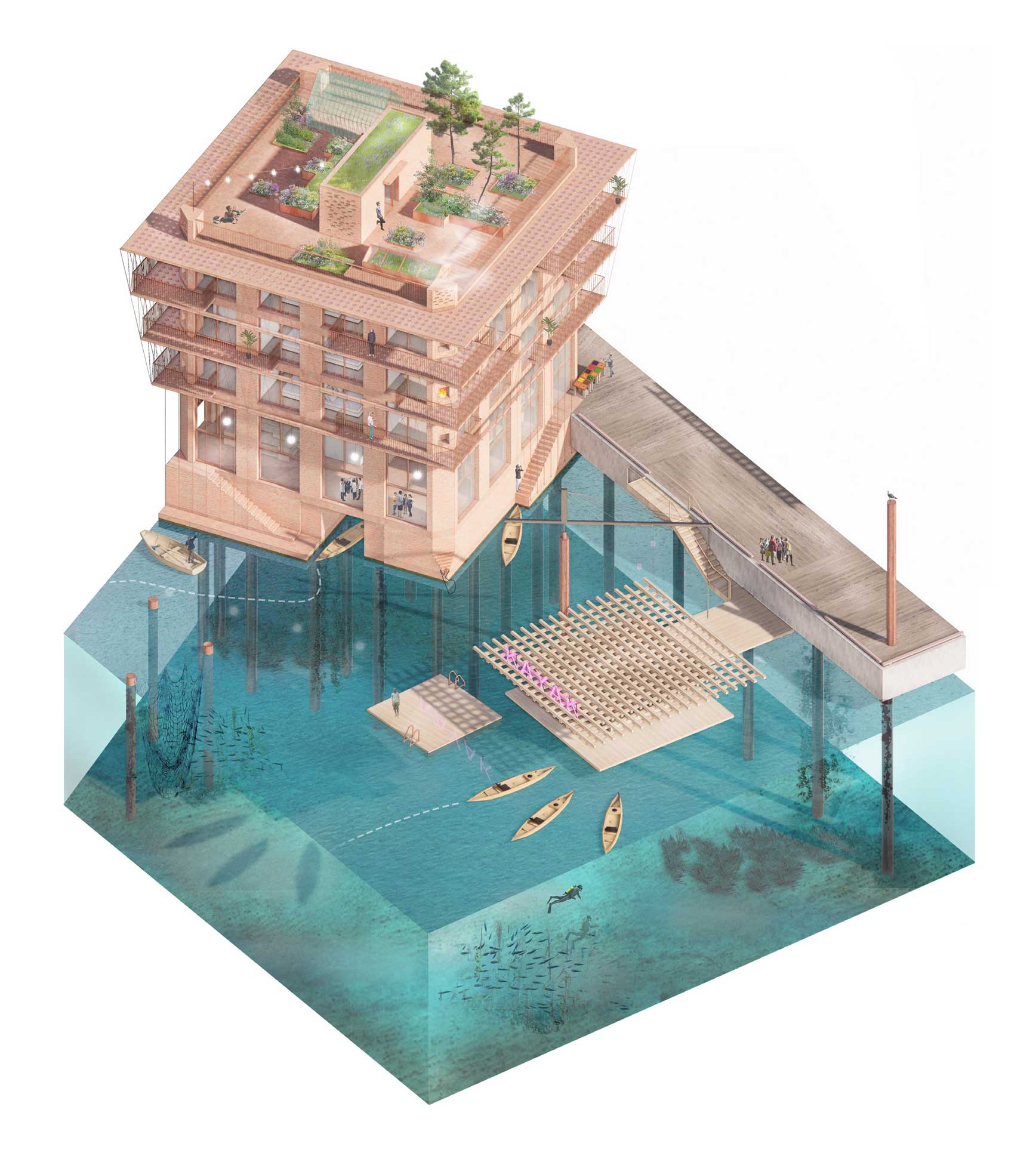
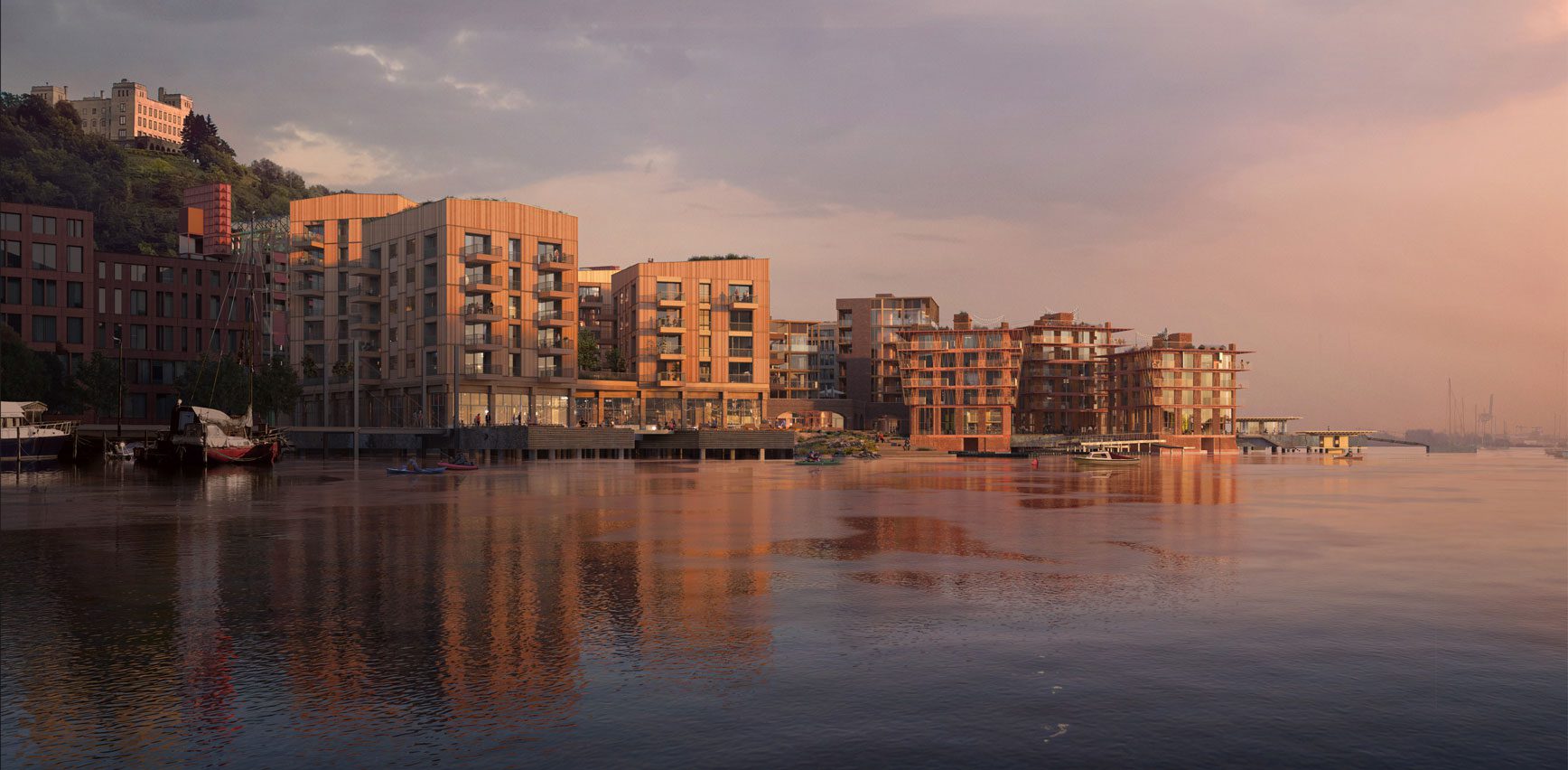
Circularity in Grønlikaia
The development of Grønlikaia presented a unique opportunity for the creation of a neighbourhood that embodies the “safe and just space for humanity, with a thriving economy” described by Kate Raworth’s Doughnut Economic model for the 21st century.
Our vision for the district represents a paradigm shift in design, delivery and operations, bringing each phase of the project ‘within the doughnut’. In response to the brief and the interests of the stakeholder group, our design proposal was guided by close study of the client-commissioned ‘A Doughnut for Grønlikaia’ which maps five identified focus areas against six key themes.
We aim for Grønlikaia to be an exemplar district, where fulfilling lives are lived ‘within the doughnut’, by a community aware of in its impact and naturally engaged and enabled in regenerative and socially cohesive behaviours. With a focus on adaptable, sustainable, social infrastructure, and with commercial optimisation no longer the single measure of success, we could strive to create a place that reflects and responds to the needs of the community, and of wider society. Through the creation of social value and investment in natural capital, lost to the site through previous development, we believe that Grønlikaia can become a place with a distinct and special character.
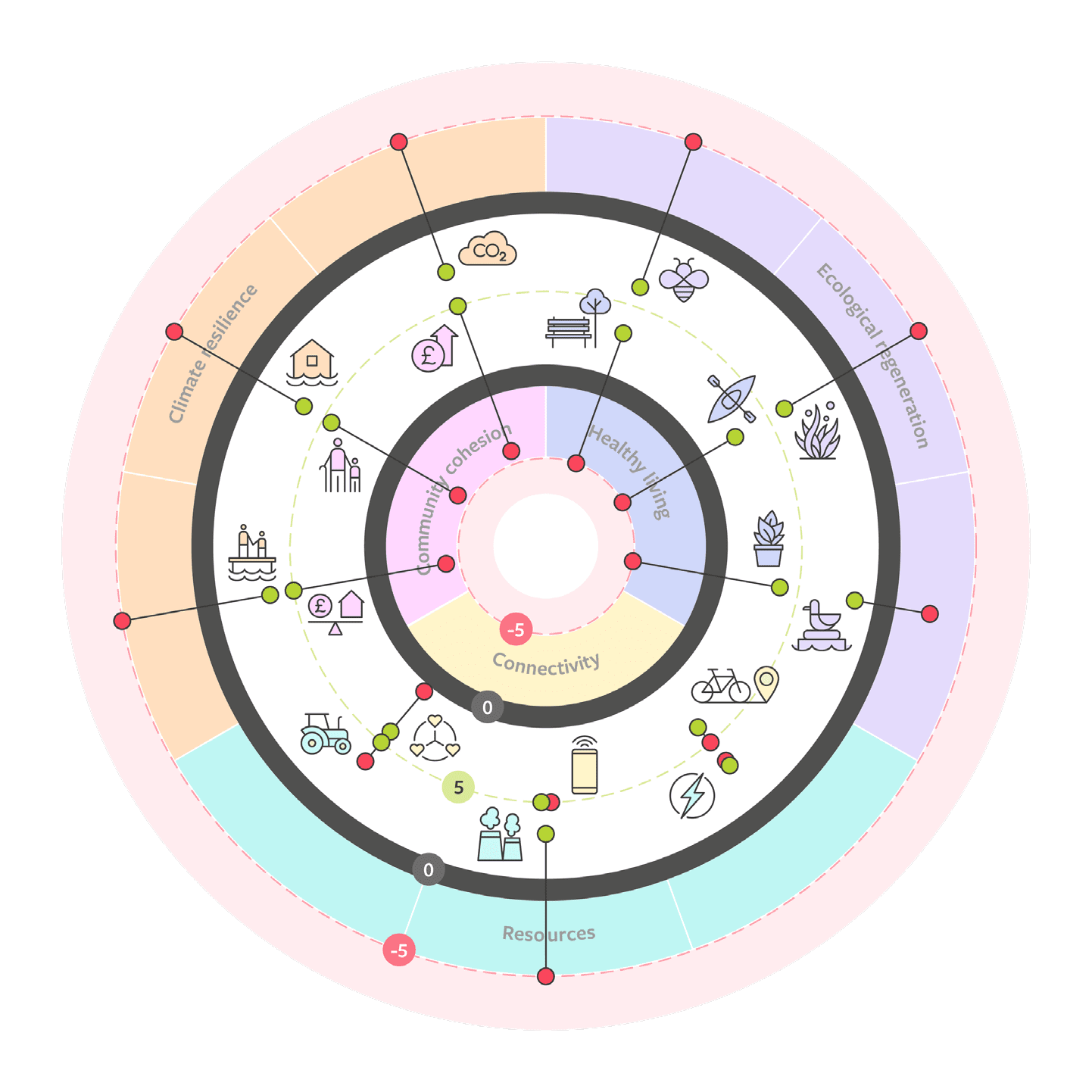
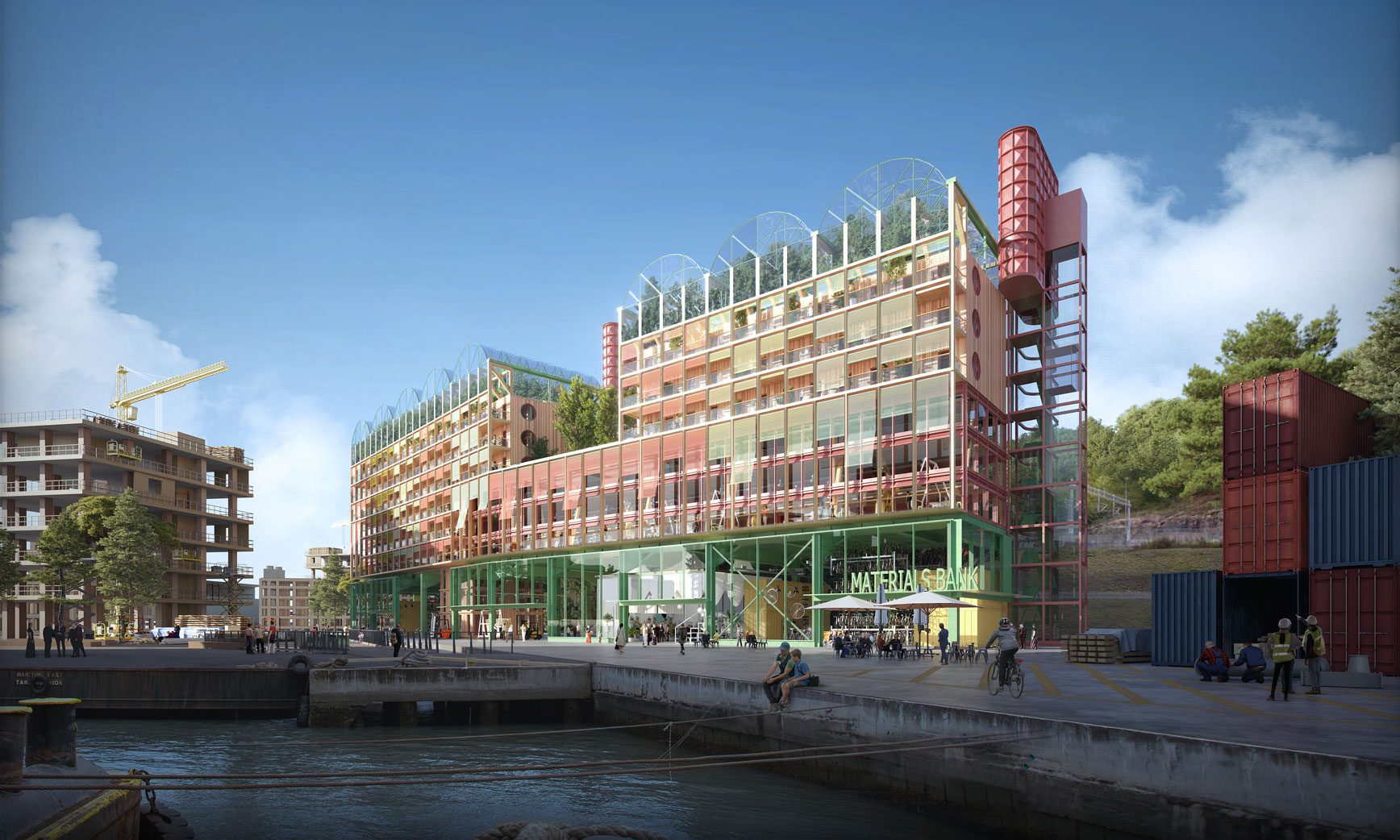
The Materials Bank
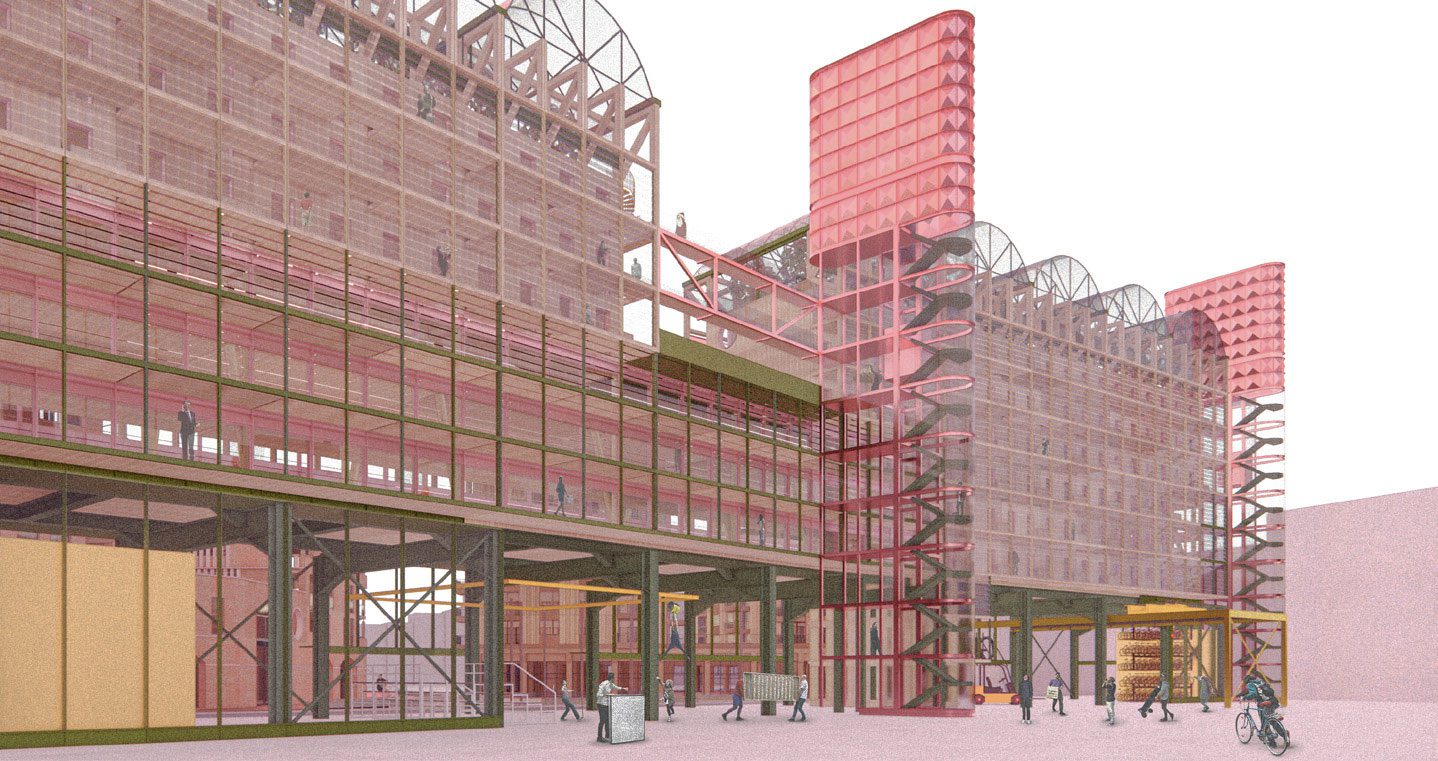
The Materials Bank
At the rear of the site, at the hinge-point of the masterplan and providing the break between the public and recreational areas of Grønlikilen, we proposed a building which would embody the circular aspirations for the district, centre those values in the social life of the place, enable and foreground the physical delivery of a circular district (from the centre out) and conceived to adapt to a multiples uses over time, offering critical flexibility (the potential, at the extreme) to adapt from 100% commercial to 100% residential) as the requirements for the district shift over the many years it takes to deliver a project of this scale.
We imagine this building as the first to be constructed, ‘feeding’ the rest of the development with circular materials, delivered by sea, and processed within its raw ground floor spaces. In time, the ground floor adapts to include areas for public interaction with these processes, alongside repair facilities and enterprise spaces in a highly public setting. Above that in section, ‘layers’ accommodating innovation spaces, flexible modular living spaces, and rooftop communal food production and rainwater harvesting.
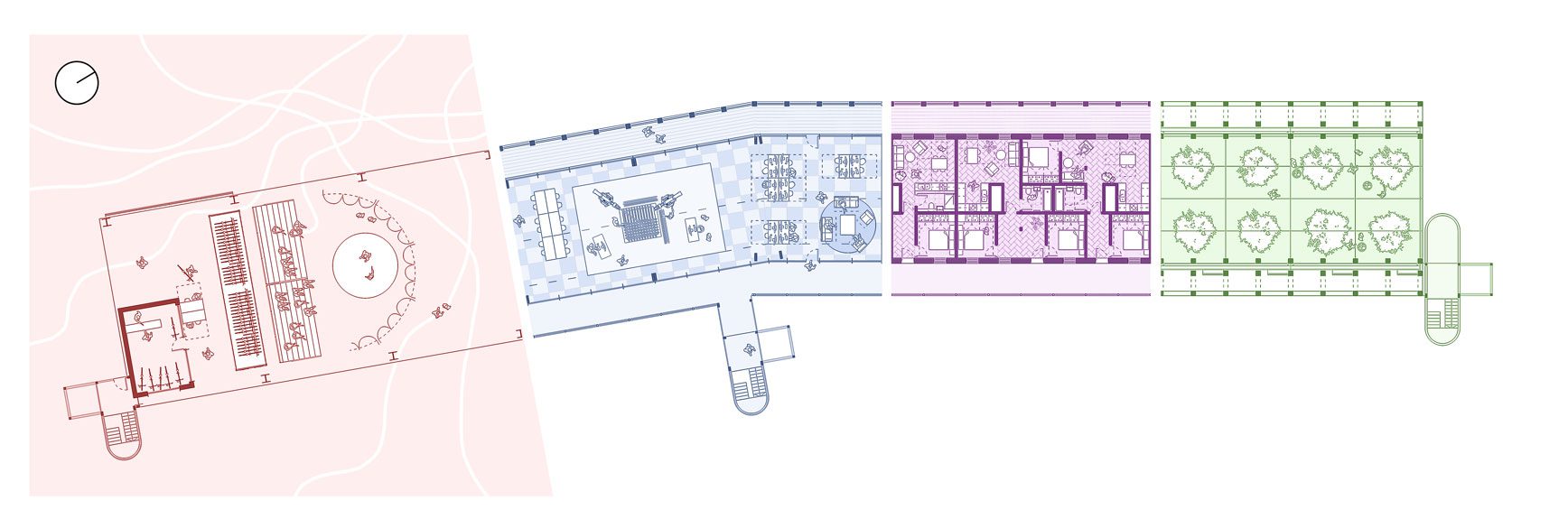
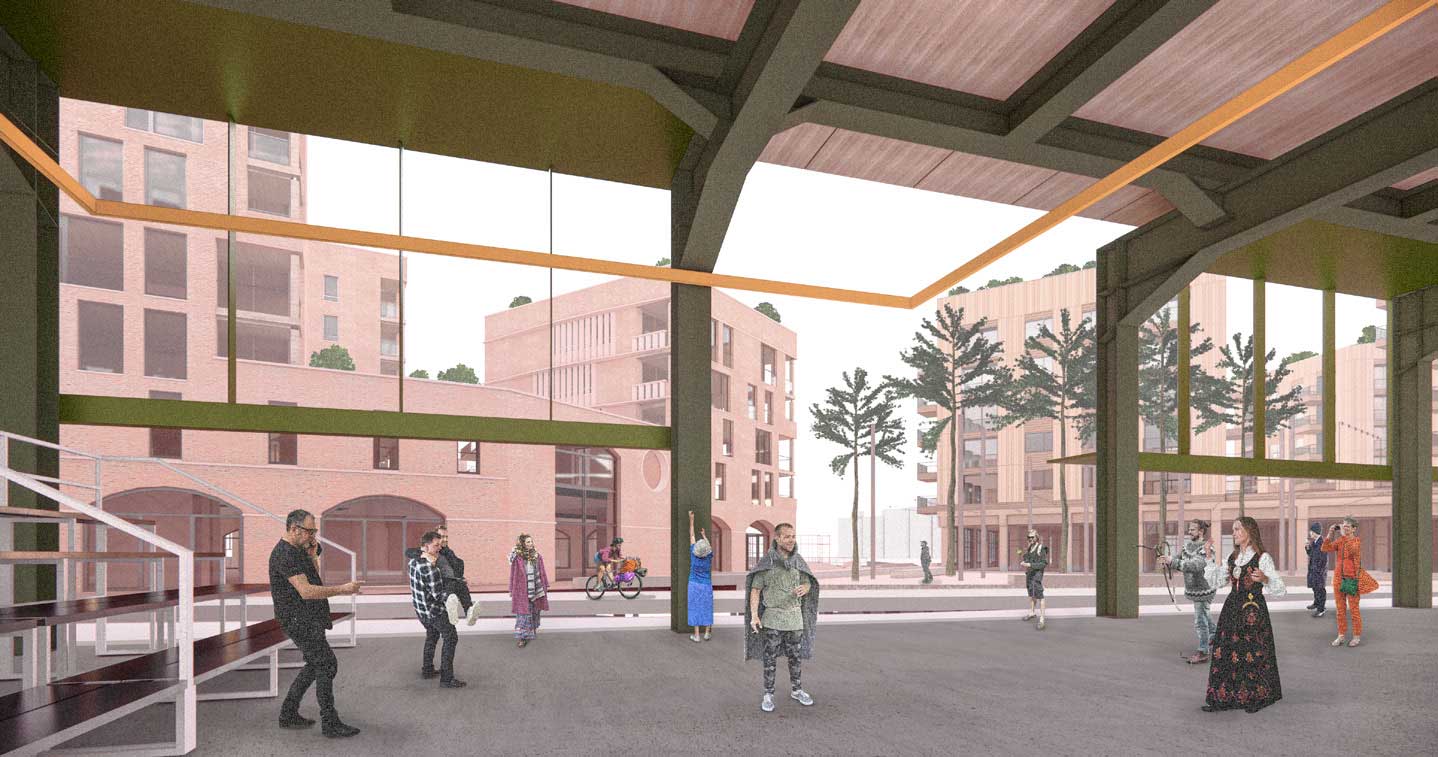
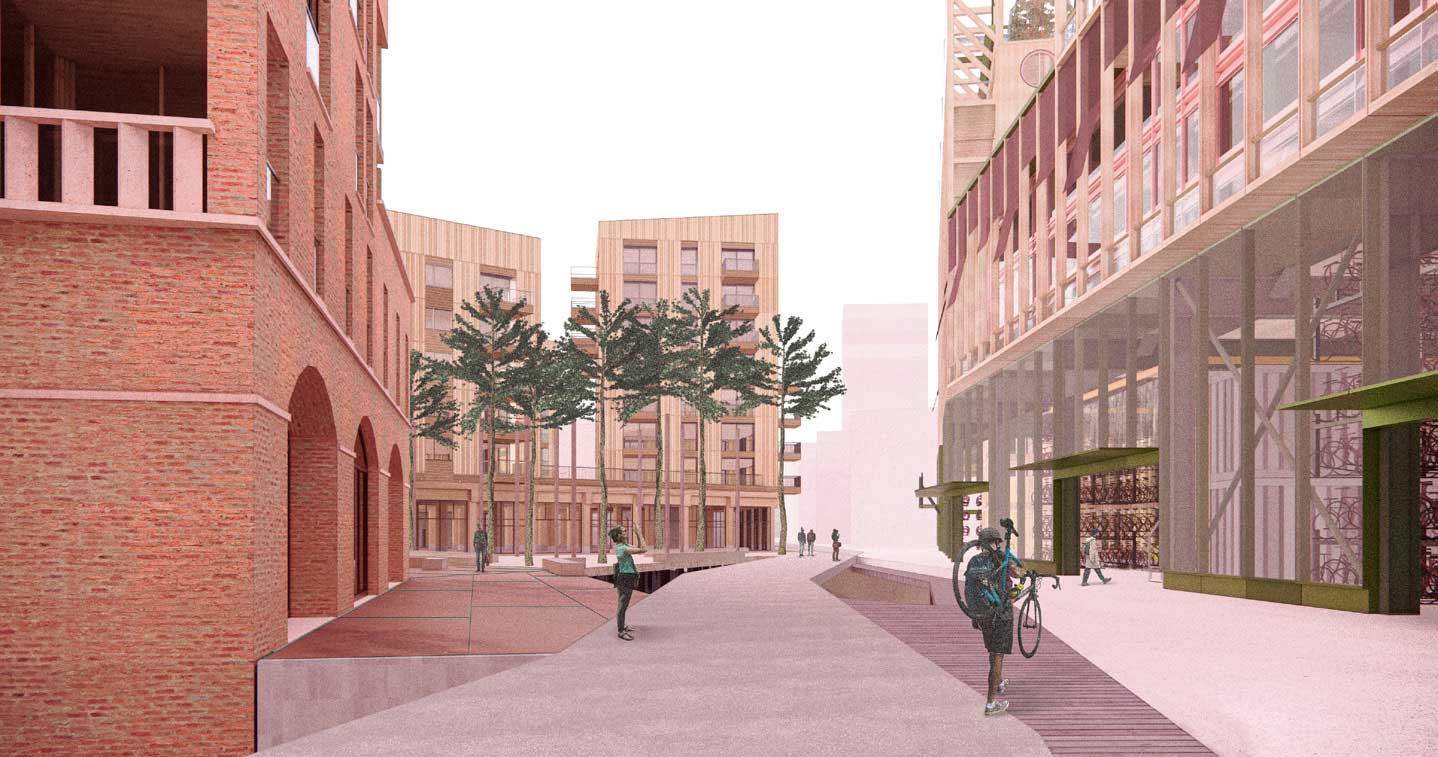
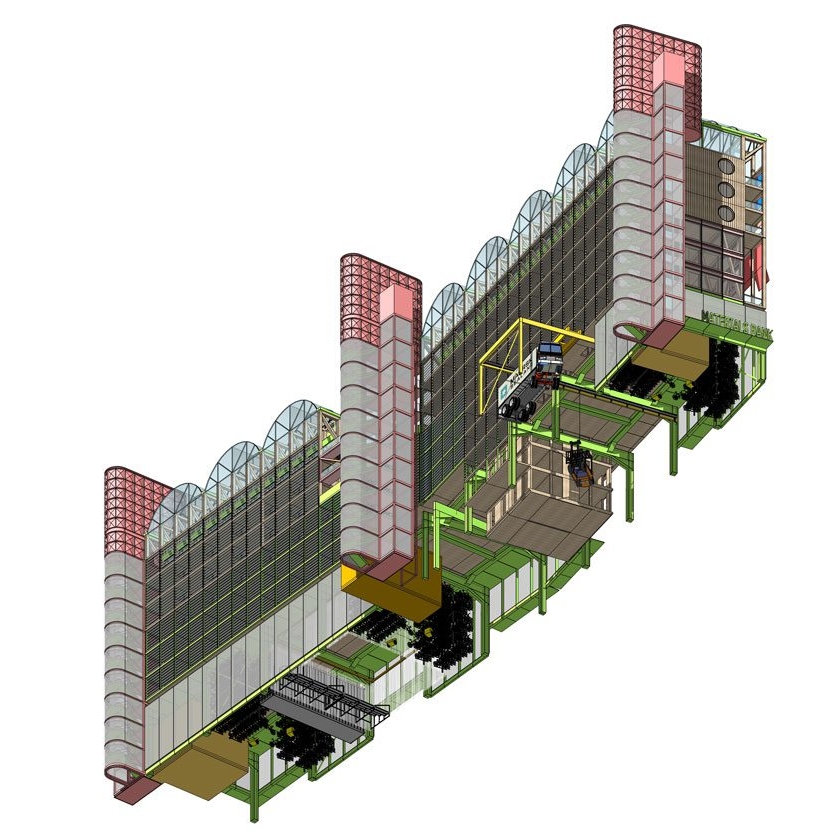
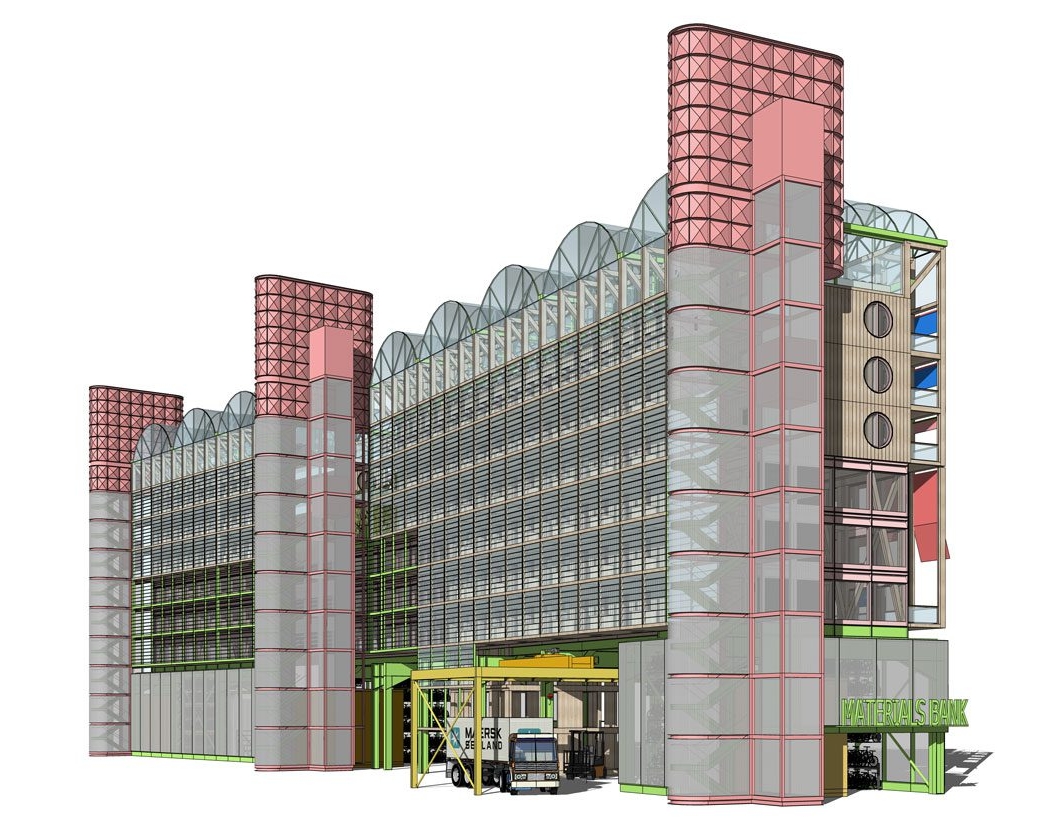
Image Credits: Haptic, Aesthetica Studio
Team: Haptic, Morris+Company, Mae, Gort Scott, Neighbourhood, Useful Projects, Periscope and Tin Phan.
